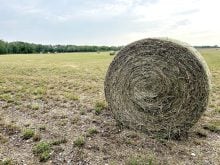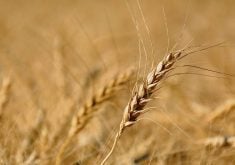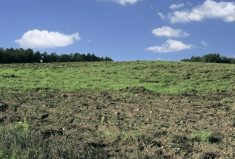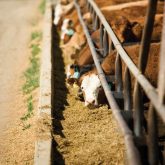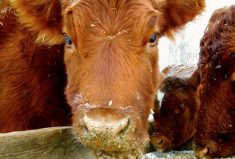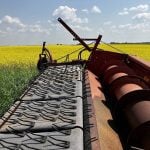Hail damage this summer is approaching an all-time high — and with many producers putting livestock on their ruined fields, the risk of nitrate poisoning is also shooting up.
So be sure to do a feed test first, said a beef extension specialist with Alberta Agriculture and Forestry.
“A feed test is much cheaper than losing an animal,” said Andrea Hanson.
Sometimes producers will wait to see if crops recover after hail, but nitrate levels in damaged crops can continue rising. (That doesn’t happen when a crop is swathed).
Read Also
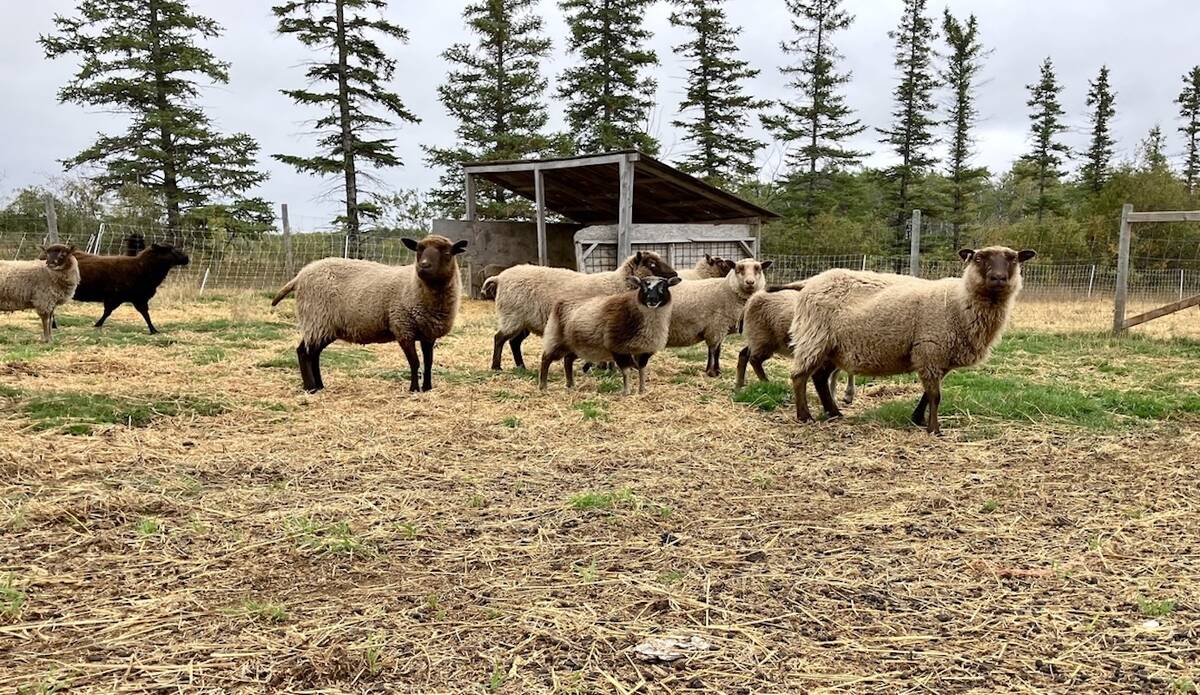
Mosquito-borne virus could be devastating to sheep breeding operations
Cache Valley virus, a mosquito-borne disease that infects small ruminants, could be a devastating hit to small operations.
Many municipal districts and counties have feed probes that can be used for tests and producers who have baled the crop should test from several bales to get a representative sample, said Hanson.
“It only needs to be a large Ziploc bag of feed that gets taken in,” she said.
Nitrates accumulate in plants stressed by drought, hail, or frost. There is a much smaller risk of nitrate poisoning from perennial hay. Alfalfa, for example, stores nitrogen in the nodules, and only pushes it up into the plant when it’s needed. In an annual crop, nitrates can build up over time, depending on growing conditions.
“The big thing that producers need to understand is that a simple feed test can help them manage anything that they may have to deal with, with that feed,” said Hanson.
Feed that contains nitrates can be fed, but nitrate levels need to be managed — the higher the level, the more the feed needs to be diluted.
When ingested, nitrates are converted to nitrites and if levels are too high, the rumen can’t deal with them and they get into the blood system. The result is similar to carbon monoxide poisoning — an increased heart rate, muscle tremors, vomiting, and laboured breathing can all occur. An animal may start to stagger, and the area around its lips and other membranes will be blue from lack of oxygen. The blood of animals who die from nitrate poisoning will often appear chocolate brown.
If an animal dies from nitrate poisoning, other animals should be pulled off the feed immediately.
“If you have just cut the crop, don’t just turn out the cows and walk away. Be vigilant and be watching, and check to see what the animals are looking like,” said Hanson.
A guide on how to properly sample feed is available at foragebeef.ca. It’s also important to find out what kind of nitrate test was used, as limits are different depending on how the nitrate was tested. A conversion chart for feeding nitrate can be found at agriculture.alberta.ca.





